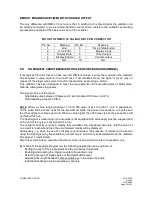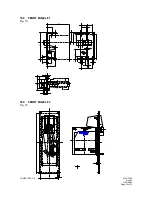
COMESTERO GROUP
M21/03.02
Rev.02
of 25/09/03
Page 17 of 34
CONTROLS IMPLEMENTED ON RM5
Control
Function
254
Simple poll
253
Address poll
252
Address clash
251
Address change
250
Address random
249
Request polling priority
248
Request status
246
Request manufacturer id
245
Request equipment category id
244
Request product code
243
Request database version
242
Request serial number
241
Request software version
240
Test solenoids
238
Test output lines
237
Read input lines
236
Read opto states
233
Latches output lines
232
Perform self check
231
Modify inhibit status
230
Request inhibit status
229
Request Buffered credit or error codes
227
Request master inhibit status
210
Modify sorter path
209
Request sorter path
197
Calculate rom checksum
196
Request creation date
195
Request last modification date
192
Request build code
184
Request coin id
170
Request base year
169
Request address mode
4
Request comms revision
3
Clear comms status variables
2
Request comms status variables
1
Reset Device
For the detailed description of each control listed above please refer to the CCTALK manual
available on this site:
www.cctalk.org
All RM5 coin validators produced by implementing CCTalk protocol are configured as
VALIDATORS 00 (please refer to chapter 8.1. VALIDATOR CONFIGURATION). Each of them, in
order to meet the requirement of non modifiable condition, is programmed so that nobody can
intervene
on
the
settings
carried
out
by
Comestero
either
through
the
usual
management/programming systems (Clone 5 and RM5 Programmer) or by acting on the output
connector.The protocol also identifies the type of physical interface to be used and defines the
voltage levels and suggests the appropriate circuits.
It suggests the type of connection (connectors). In particular for the coin validator, a 4 Pin and a 10
Pin connectors are suggested (and therefore used by our company) represented in para. 3.5.






































